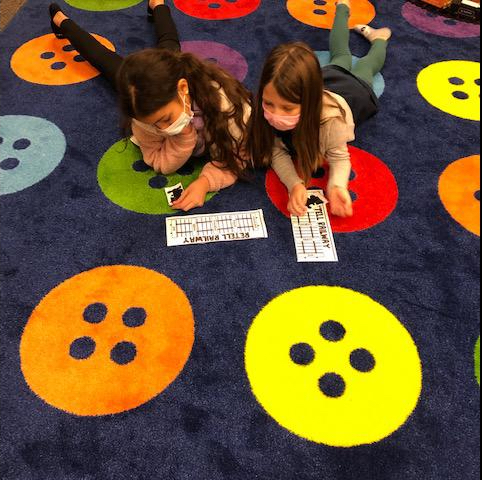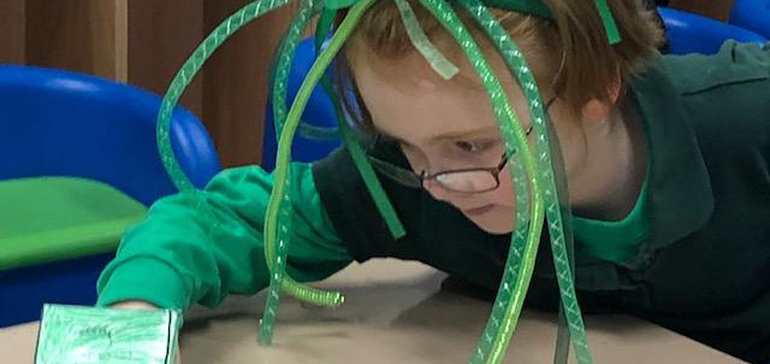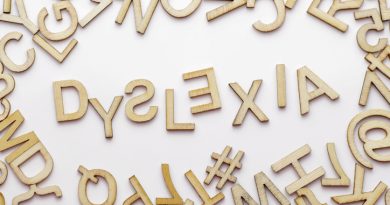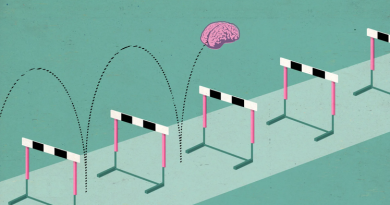5 ways educators infuse joy into learning
Providing fun, engaging activities and welcoming settings for instruction can boost happiness in classrooms — and learning.
Maura Renzi could teach her 1st graders about the stages of the moon by showing them graphics of the monthly solar changes and having the students make pencil shadings on a worksheet.
But instead, she hands out Oreo cookies and encourages students to take the sandwich cookies apart and eat away at the white cream centers until they resemble the eight lunar phases. The class also built moon mobiles and wrote books about the moon.
“I just feel like learning needs to be fun,” said Renzi, who teaches at Edison School of the Arts in Indianapolis Public Schools. “Anytime that they’re having fun, they’re more engaged.”
Across the country, educators like Renzi are infusing joy and happiness into learning. It’s a strategy that has been recommended — and executed — for many decades, but one teacher and administrators say has become more deliberate and purposeful since COVID-19 disrupted in-person learning and created economic, emotional, and physical hardships for communities and families.
“I think folks are trying to bring joy to classrooms and schools in general by making it a place where kids want to be,” said Robert Simmons, a scholar in residence at American University’s School of Education and a former teacher and administrator. “People are trying to make sure that they engage kids and [have] activities that are actually fun.”
Here, educators, researchers, and advocates share their recommendations of how learning can be both rigorous and joyful:
Provide a welcoming place to learn
Making learning spaces aesthetically attractive boosts the desire for learning. Renzi transforms her classroom into a magical and whimsical place to encourage learning. For example, in March she tells her students a leprechaun has been following her family, and she’ll decorate the classroom with green glitter.
When students come to the classroom each morning, they see leprechaun footprints marked in “fairy dust.” Then on March 17, students discover leprechauns “visited” overnight and have tipped over chairs and caused good-natured chaos.

The mythical creatures also leave chocolate coins and dollar bills for students. Although the St. Patrick’s Day fun is not connected to a specific lesson, students practice their literacy and writing skills by reading books about the holiday and writing about what they would say to a leprechaun if they met one.
“It’s just something fun to let them imagine,” Renzi said.
Connect with communities
Having trust and transparency with community organizations can strengthen school-home-community relationships, which benefits the entire school community, said Simmons.
“It’s not just about educating kids inside of the building, but it’s also about supporting and educating kids and embracing their humanity on the outside, right?” Simmons said.
Through collaboration, schools and community partners can help prevent certain neighborhood challenges from interrupting students’ educational pursuits.
For example, in Washington, D.C., Mayor Muriel Bowser recently announced the city is supporting a new safety initiative that places trusted and caring adults along routes to support students as they walk to and from schools. The Safe Passage Safe Blocks program will receive $4.3 million from the D.C. Office of Out of School Time Grants and Youth Outcomes for FY 2022.
Community-school collaborations can also address food insecurity, another big barrier to learning, Simmons said. Creative enterprises such as community gardens can not only provide nutritious food but allow for instruction in horticulture — as well as build school spirit.
“I don’t think that as a K-12 system, we spend enough time thinking about hydroponic gardens, and like how do you grow food as a communal enterprise with the school being the hub,” Simmons said.
Incorporate games, project-based learning
Staying relevant to students’ interests and incorporating some of those elements into instruction can get students excited for learning, said Laura Tierney, founder, and CEO of The Social Institute, an online learning platform.
For instance, some teachers create short videos of lessons to post on social media platforms popular with students.
Teachers also gamify lessons to make learning fun. Trivia-type apps, such as Kahoot and Quizlet, let teachers customize games for specific lessons.
Instructional games can also be nondigital, according to Michele Haiken, an English teacher at Rye Middle School in Rye, New York. For instance, a scavenger hunt, bingo, and dice games can supplement instruction, Haiken wrote in a blog for the International Society for Technology in Education in February.

Tulsa Public Schools in Oklahoma makes learning joyful by using project-based learning and active classrooms during the school day, before and after school, and in the summer, said Superintendent Deborah Gist. The district provides experiential learning not only on its own campuses but at the city’s museums, libraries, zoo, and more locations, she said.
“Our students want to have what they’re learning to be connected to something real and tangible,” she said.
Let students lead
Giving students “voice and choice” can promote learners’ educational ownership and build their self-confidence and self-esteem.
In Renzi’s 1st grade classroom, students discuss their math solutions or story plots among themselves, building on each other’s explanations. The exchanges are more of a conversation as opposed to Renzi directing the conversation or providing all the answers.
Letting students discuss a book’s plot or character development by adding onto another child’s observation offers opportunities for student engagement and control, she said.
“It builds confidence and self-esteem when they’re running the show and the teacher is just facilitating,” Renzi said.
Showing students they can have ownership over their learning can help students stay on task and learn from their mistakes, said Brittany Patton, an interventionist at KIPP Sunshine Peak Elementary School in Denver, Colorado.
Give staff needed support
Staff shortages and the stress teachers and other school staff are experiencing as they respond to pandemic-related challenges could impede opportunities for adding creativity, excitement and fun to instruction, educators said.
A stable educator workforce allows teachers to be ready to connect with students and focus on their learning. When there are staff shortages, the remaining staff often has to fill in the gaps caused by those vacancies.
“I think for us when we think about how to bring more joy and support the creation of joyful environments in our schools, a huge part of it is making sure that we are supporting the adults in our buildings.”
Deborah Gist superintendent of Tulsa Public Schools in Oklahoma
“Naturally when teachers and families are the most influential adults in the lives of kids for the most part when you see those people missing, it creates other challenges in the flow of the intervention around [student] SEL,” said Simmons.
Recognizing the need to address the social-emotional needs of staff, school systems are making adjustments like scheduling more planning time, hiring financial and nutritional coaches, and offering other benefits to keep up morale.

Tulsa Public Schools has a wellness team at every school and additional resources to support staff members. “I think for us when we think about how to bring more joy and support the creation of joyful environments in our schools, a huge part of it is making sure that we are supporting the adults in our buildings,” Gist said.
Educators are also reminding themselves of why they entered the teaching profession and why they want to stay committed to this work, even when it’s difficult, said Diane Myers, senior vice president of special education behavior at Specialized Education Services, Inc., a company that partners with school systems across the country to provide expanded academic, social and behavioral services for students, as well as professional development for educators.
“The ones that are really committed to the work have, even more so, began to value the reasons that they do this and understand how meaningful the impact that they have on their students can be,” Myers said.
Use rituals to prepare for learning
Patton uses a “conscious discipline” approach to help her model coping, social, and problem-solving skills for her students, which contributes to an optimal learning environment.
She also has various rituals to help students de-stress, find empathy for others, and move around before lessons.
For example, students wish someone well by holding their hand over their heart and then pushing those thoughts out by taking their hands off their hearts and pushing the air in front of them. Students also sing, zigzag around the classroom, tap their bodies, and take deep breaths in and breathe out like a lion, ghost, or whatever noise they want to make.

Patton’s students also have “commitment trackers” and pick a commitment they will focus on for the lesson, such as keeping their body calm or listening to their teacher. They receive a stamp for meeting commitments and, if they don’t, they will discuss how they will aim to meet the commitment at the next lesson.
“I’m really proud of the way my students have grown in accepting their ‘oopses’ and using those moments to reflect and grow,” Patton said in an email.
Myers said other school and classroom routines that emphasize positive and supportive behaviors, such as positive behavioral intervention supports, are also contributing to teacher and student happiness.
“I think we’ve really been able to use the systems we have set up to structure these joyful moments and to really make them part of our ongoing system,” she said.
Source: https://www.k12dive.com/news/5-ways-educators-infuse-joy-into-learning/611735/




